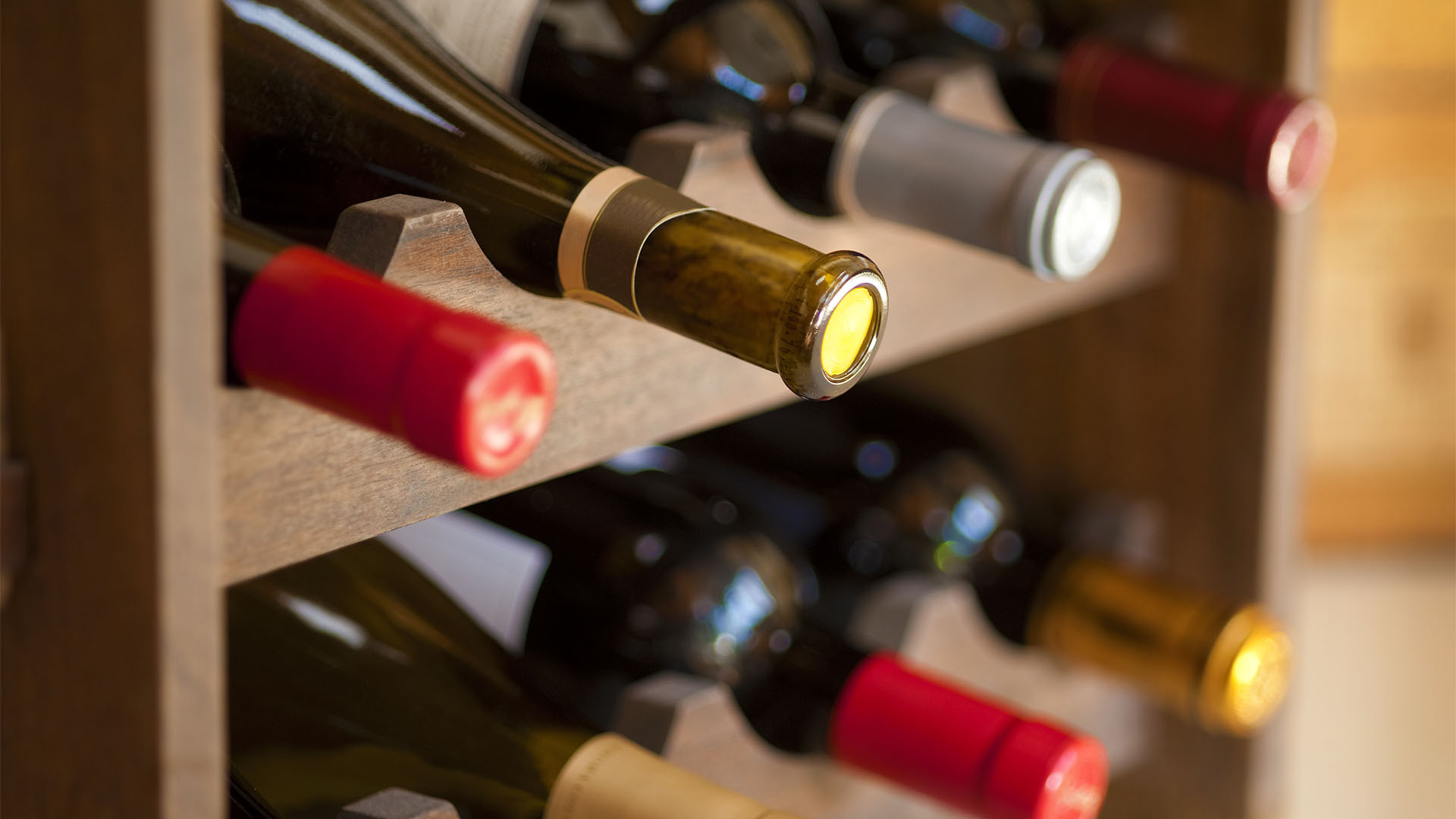
If you love trying new bottles of wine, there's little that's more exciting than a wine of the month club. When that big box of vino arrives on your doorstep, it's tempting to uncork the bottles one-by-one and sample everything that the wine subscription gods have bestowed upon you. But there's another option: you can cellar your best bottles to enjoy later. Aging wine is something that's often seen as being reserved for wine snobs and rich old Scrooge McDuck-types with giant swimming-pool-vaults of gold coins, but there are reasons why you might also want to get in on the action. If you're willing to wait, cellaring the right bottles when they're young can be a great value play; in a few years, that young bottle of Merlot you picked up for $15 or $20 might drink like a much pricier wine. You don't need fancy equipment or a lot of specialist knowledge to get started, and in this guide, we'll walk you through everything you need to know to start aging wine like the pros. Pull up a chair, get out the good crystal, pour yourself some vino, and toss that pinky in the air. Let's talk wine!
Do I have to cellar my wine?
View this post on Instagram
Absolutely not! Most of the wines you'll come across in your average wine subscription are selected because they're perfectly poised to be consumed as soon as you tear into your shipment. Most subscribers use wine clubs as a way to keep their wine racks full of bottles that they can enjoy right away, and there's absolutely nothing wrong with treating your wine of the month club membership as a trickling faucet that keeps your house from getting dry. Your subscription experience can be whatever you like, and you should feel no pressure to save any of the bottles in your shipment if you'd rather drink them right away. However, if you want to try your hand at cellaring, this guide will give you some of the basic tools you'll need to get started.
How do I pick which bottles to save?
View this post on Instagram
The truth is, only about 1% of all the wines in the world are designed to be saved. The great majority of bottles are absolutely fine to open and drink right away, but that doesn't mean that other bottles won't benefit from a little time on the shelf. Some people will tell you that expensive wines age best, but that's not exactly true. The wines that age the best are typically the full-bodied ones with big, bold flavors. Your Chardonnays, Cabernet Sauvignons, Merlots, and Syrahs are better picks than any bottles of Sauvignon Blanc, Pinot Gris, or Grenache you might receive. An easy way to remember this is with something we like to call the "sizzle test." Imagine that you're sitting outside on a hot summer's day, sizzling in the sun. What wines do you crave when you're baking in the heat? Those bottles that are light and refreshing (and often served chilled) are usually great for opening now. The ones that seem too heavy or oppressive to drink in the heat? Those are usually perfect for cellaring.
Of course, there's another, more sentimental reason to save wine. If you pick up a special bottle for a celebratory occasion-- say an anniversary, birthday, or holiday-- sometimes it's fun to buy two so you can tuck one away. Our senses are closely intertwined with our memories, so revisiting a bottle you enjoyed on a special occasion can be a sensory walk down memory lane.
What's the benefit of cellaring wines?
View this post on Instagram
Practically speaking, aging wine has a number of benefits. It can mellow sharp flavors, help wine develop a sense of depth and weight, and cause tannins to smooth out. Younger Cabs, Merlots, and Zinfandels will all age nicely. In this regard, aging wines can be a way to bat a little above your weight when it comes to value for money. Sure, you can purchase older vintages of these varietals now that will exhibit all the delicious flavors of an older wine, but you can also save bottles when they're young (and less expensive), and let them mature a little under your own roof. Planning to host a future Thanksgiving? Why not plan ahead? If a bottle in your next wine shipment happens to catch your eye, you can always earmark it for Turkey Day 2022 or 2023.
Where do I store them?
View this post on Instagram
Wine can be a little bit like Goldilocks; it's happiest when the conditions are juuuust riiiiight. And like the straw-haired girl from the storybook, your wine prefers conditions that make for comfy snoozing. When you're creating the right space for cellaring, you can take inspiration from nap time:
- Darkness: Do your wine a favor and make sure its resting place is nice and dark. Wine cabinets, wine cellars, or even a shady corner of the house that's out of direct sunlight will do just fine.
- Airflow: Stuffy rooms make for a terrible night's sleep, and your wine agrees. Ventilated rooms are ideal.
- Moisture: Is there anything worse than feeling sticky in bed? Ick! Make sure your bottles are dry and the atmosphere's not too humid.
- Temperature: Wine doesn't like to get too hot, and it doesn't like the temperature to fluctuate. Cool temperatures are best. (No duvet necessary.)
- Vibration: No jumping on the bed! Your wine likes to be left alone, thank you very much. The do not disturb sign should be left of the door at all times.
How do I decide when to open my wine?
View this post on Instagram
There's no quick answer when it comes to figuring out how long you should save a bottle of wine; different varietals have different sweet spots when it comes to cellaring. Chardonnay can benefit from 3-5 years, while some reds will come into their prime after as many as 15+. If there's a particular bottle you'd like to hang on to for later, the best advice is to google it. One important thing to note is that it's always better to err on the side of under-aging vs. over-aging your wine. Even tucking a bottle away for a year or two will help the flavors develop nicely (and keep you from having to twiddle your thumbs well into the next decade).
Are there any other tips I should know going in?
View this post on Instagram
If you're planning to save more than a bottle or two, it's wise to do a little record keeping. There's nothing more frustrating than accidently opening up a bottle you'd meant to save or staring a bottle in the eye with zero recollection of where it came from or when you're supposed to open it. We recommend a special cellar notebook, paper bottle tags, or even a sheet of paper you keep folded up in your wine cabinet. Simply make a note of each bottle you set aside, where it came from, why you decided to keep it, and when you intend to open it.
Last but not least, have fun with it! If you're just getting started with aging wine, make sure to bring along your sense of curiosity and an open mind. Cellaring is a great way to improve the quality of the wines you receive in your wine subscription, but it's also a way to extend that flash of excitement you feel when the wine first arrives.
Have you tried cellaring wines? Are there any bottles you're currently saving for a special occasion? Let us know in the comments!





Please do not enter your email address in the Name field or in the comment content. Your email address will not be published. Required fields are marked *. Remember to post with kindness and respect. Comments with offensive language, cruelness to others, etc will not be approved. See our full comment policy here.